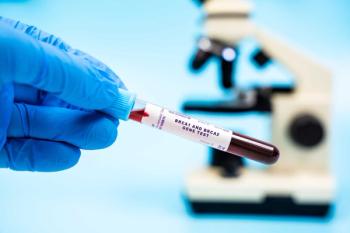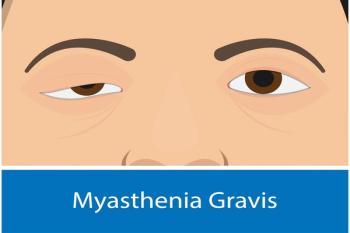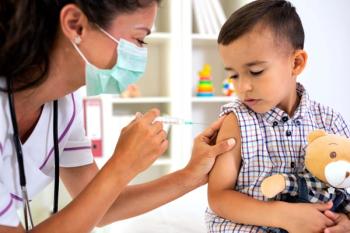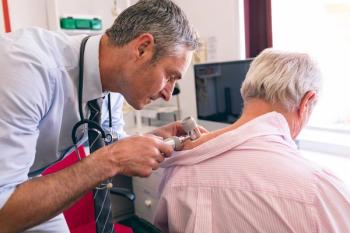
Christian John Lillis Shares Goals of the Peggy Lillis Foundation's "See C. Diff" Campaign
Amid National C. Diff Awareness Month, Christian John Lillis, cofounder and executive director of the Peggy Lillis Foundation for C. Diff Education & Advocacy, explains the foundation's "See C. diff" campaign and what the PLF hopes the public will learn throughout the month.
Christian John Lillis, cofounder and executive director of the
PLF, which was founded in response to the death of 56-year-old Peggy Lillis from an infection caused by Clostridioides difficile, is the leading national organization dedicated to combating C diff infections by educating the public, shaping policy, and empowering advocates.
Transcript
What are the goals of this year's "See C. Diff" campaign?
So, we started "See C. diff" back in 2018 to address the low public awareness of C diff. When we started, less than a third of Americans had heard of C diff, and yet it is the most common health care–associated infection, and it is one of the top 5 urgent threats, according to the CDC. This lack of awareness really inhibits people's ability to prevent C diff, to think they or their loved one might have C diff.
As people may know, my mother died from a C diff infection, and we've often wondered if we had heard of C diff, knew the symptoms, and knew the risk factors, we might have acted more quickly to get her medical treatment. For us, if you know C diff is out there, maybe you'll be more judicious when getting antibiotics. Maybe if you start to have symptoms of C diff, like prolific diarrhea, you won't just think, "Oh, I ate something bad." Especially if it continues for more than a day or so, you'll go and seek treatment, seek testing.
Since 2018, we've had this month-long campaign to commemorate C diff Awareness Month in November. We started really small on social media back in 2018; we reached about 80,000 people who probably didn't know about C diff.
In the past 4 years, we've really continued to invest in the campaign itself, bringing on a publicist, and growing our partnerships with professional associations and other disease organizations. By the end of last year, we had gone from reaching 80,000 people that first year to over 16 million people.
What are the key messages you hope the public will take away from this campaign?
So, when it comes to C diff Awareness Month and the "See C. diff" campaign, we always have our sort of general messaging that we're looking at every year, which is to help people understand that C diff is a dangerous and potentially deadly infection that's hiding in plain sight. People might know that some person's grandmother had it in the nursing home, but they don't really deeply understand it. We also want them to understand that it's the most common health care–associated infection, that it is considered an urgent threat, that it is preventable, it is treatable; having that knowledge and being aware is always going to make you better equipped to pursue treatment.
Each year, we also look at having a specific theme for that year. This year, our main tagline is "See C. diff Prevented." What we've come up with are these 7 opportunities that there are to prevent C diff infections, both the primary infection and the secondary infection.
We're promoting this a lot on social media, but just to give you a quick rundown: The first one is avoid unnecessary antibiotics. The second one is to eat a diet that's high in fiber and supportive to the gut microbiome. Three is to ensure an accurate diagnosis; unfortunately, where we are with diagnostics is that some of them are a little too sensitive and some of them aren't quite sensitive enough, so a better educated patient can have a better conversation with their doctor.
If your loved one is diagnosed, learn about C diff. How does it work? How does it spread? What are the risk factors? How do you protect your family from spreading it to them? Number 5 is taking proper precautions, again, coming back to this prevention message. A lot of people have C diff in their home, they're not in the hospital, so how do you take the steps to make sure you're cleaning the spaces that the person with C diff is staying in with a bleach solution, that you're giving it enough time to do that.
Number 6 is get the best antibiotic. Even though they're no longer approved by the guidelines, people still get metronidazole; it's doesn't work that well, it's also a very toxic antibiotic, so we want people to be able to ask for vancomycin, fidaxomicin, whatever is the best treatment. Also, we want them to know how to prevent additional recurrences. Obviously, they get their first recurrence, it could be an FMT [fecal microbiota transplant]; more likely now it'd be one of these new microbiome therapies. So, seek that out and advocate to get that.
Those are the 7 opportunities that we're looking for, and we're trying to make them as understandable for people as possible and create a roadmap. So, that's what we're looking at this year.
We have another campaign called "You Know C. diff" where we feature people who are survivors or even those who have passed away. We talk about, "This person was a police officer, he was a loving brother, and he passed away from C diff. This person is a pharmacist, a mom, somebody who loves to play golf, and they had C diff." We want people to understand that this can happen to anybody.
Newsletter
Stay ahead of policy, cost, and value—subscribe to AJMC for expert insights at the intersection of clinical care and health economics.













































